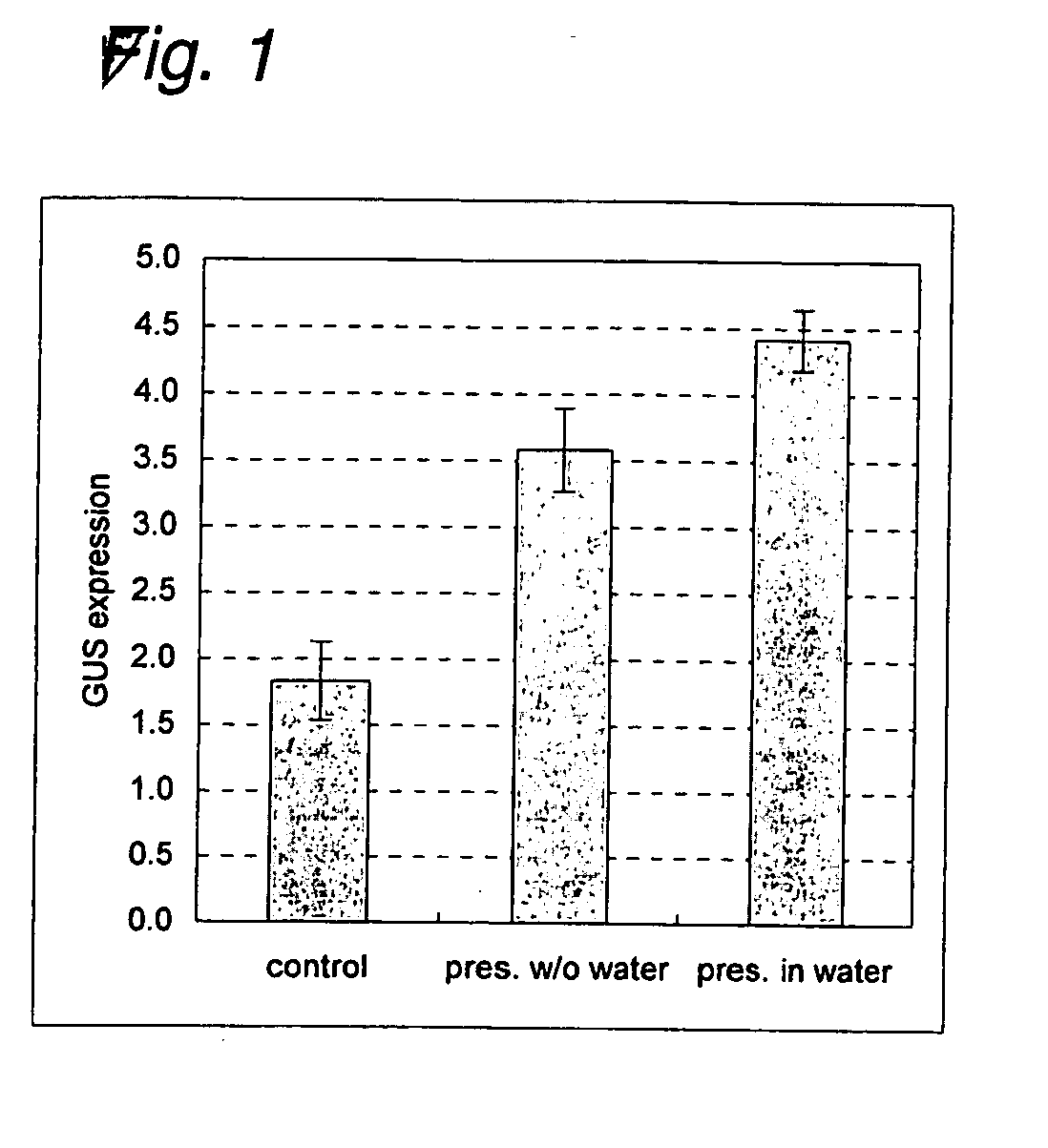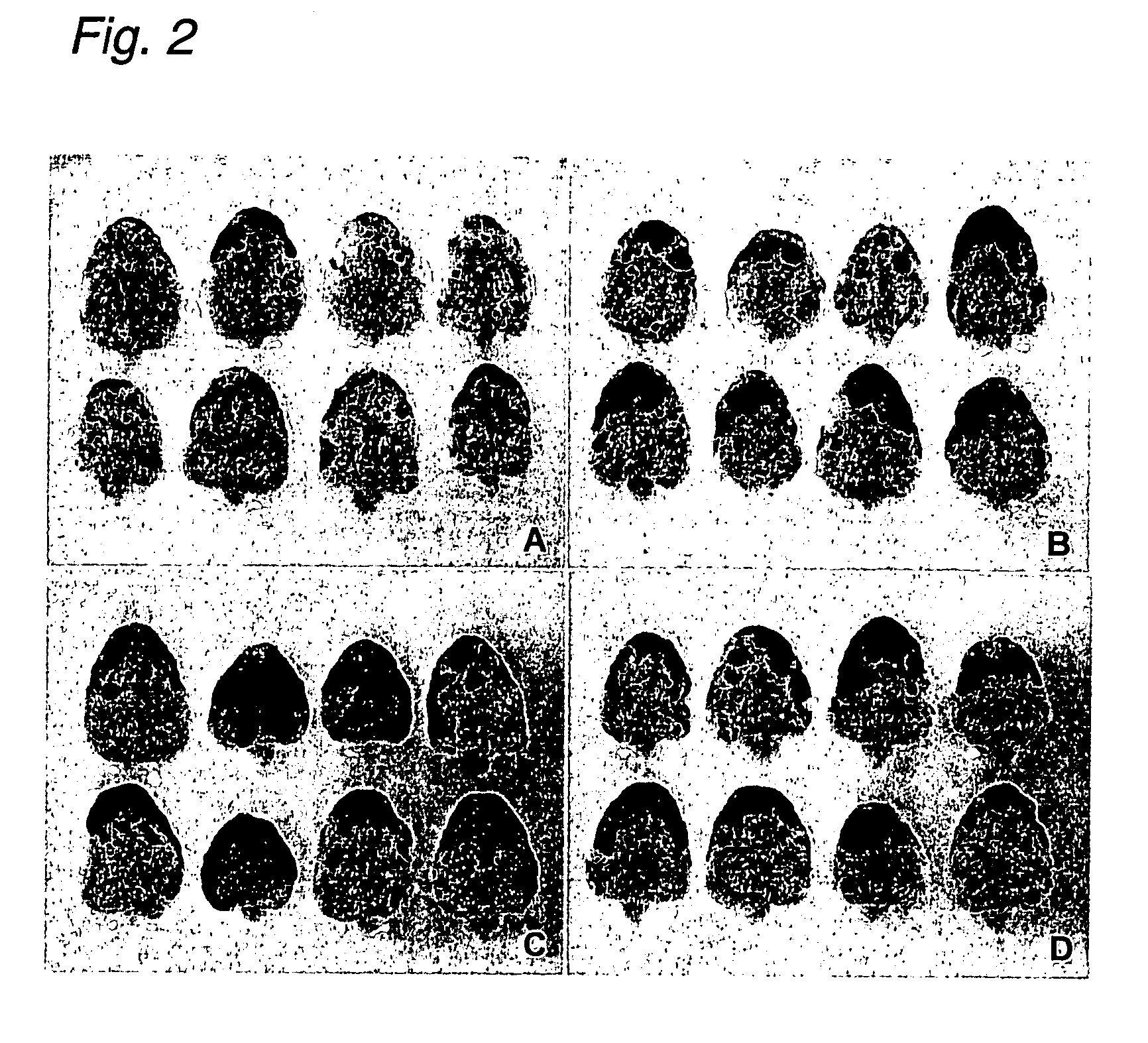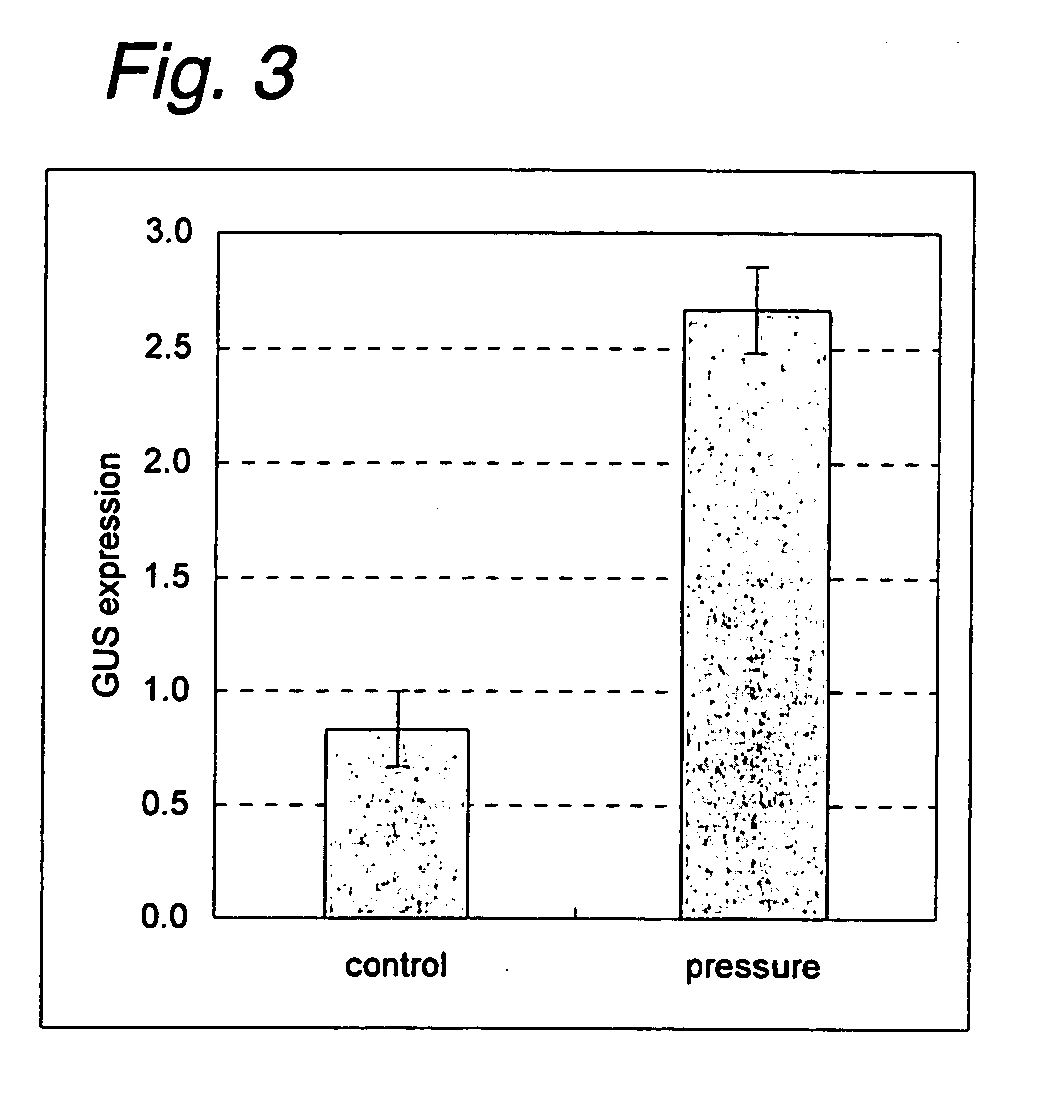Method of transducing gene into plant material
a technology of gene and plant material, applied in the field of gene transduction method, can solve the problems of large variation in the efficiency of pressurization between plant species, genotypes and material tissues, and no data are shown to support pressurization effect, etc., to achieve the effect of improving gene transduction efficiency and/or transformation efficiency, avoiding the need for additional equipment, and reducing the cost of equipmen
- Summary
- Abstract
- Description
- Claims
- Application Information
AI Technical Summary
Benefits of technology
Problems solved by technology
Method used
Image
Examples
example 1
Effects of Pressurization on Rice Transformation
[0116] (1) Pressurization
[0117] A flame-polished blunt-ended micropipette tip was inserted into the tip end of each of 5-ml disposable syringes and cut off at an appropriate length, and then the end was covered with Parafilm. Aseptically collected immature embryos (varieties: Koshihikari and Asanohikari) were placed in a syringe containing 3 ml of a liquid medium for suspending Agrobacterium (AA majorsalts, LS minorsalts, MS vitamins, AA amino acids, 0.2 g / l casamino acids, 4 g / l sucrose, 2 g / l glucose, pH 5.2) or sterilized distilled water. Collected immature embryos (variety: Yukihikari) were placed in a syringe containing no liquid such as culture medium or distilled water. The syringes were combined and held by a clamp, which was tightened to increase the pressure inside the syringes. The syringes were allowed to stand at room temperature under pressure. The pressurization force was calculated from the loss of the volume of air i...
example 2
Effects of Pressurization on Maize Transformation
[0143] Maize immature embryos (variety: A188) having a size of about 1.2 mm were aseptically collected and immersed in a liquid medium for suspending Agrobacterium (LS-inf, Ishida et al. 1996). Pressurization was performed by placing immature embryos in a syringe containing the liquid medium and tightening the clamp holding the syringe. Pressurization was performed at +6.6 atm for 5 minutes or +3.2 atm for 10 minutes. Centrifugation was performed by placing immature embryos in an Eppendorf tube containing the liquid medium in a centrifuge at 15,000 rpm, 4° C. for 10 minutes. Pressurized or centrifuged immature embryos were immersed in LS-inf medium supplemented with 100 μM acetosyringone in which Agrobacterium tumefaciens LBA4404 (pSB131) strain (Ishida et al. 1996) was suspended at about 1×109 cfu / ml, and then plated on LS-AS coculture medium. The cocultures were incubated at 25° C. in darkness for 3 days and then assayed for GUS. C...
example 3
Effects of Pressurization on Tobacco Transformation
[0146] Developed leaves of tobacco (variety: Petit Havana SR1) were sterilized by a standard method and then cut into leaf segments of about 1 cm square. Control leaf segments were immersed in LS-R medium (Komari, 1990) in which Agrobacterium tumefaciens LBA4404 (pSB134) was suspended, and gently shaken at 25° C. for 15 minutes, and then immersed in LS-R medium and cultured at 25° C. in darkness for 4 days. Leaf segments in pressurization group were pressurized at +6.6 atm for 15 minutes in a syringe containing LS-R medium and then inoculated with Agrobacterium and cultured in the same manner as for the control leaf segments. The cocultured leaf segments were assayed for GUS.
[0147] On the basis of the size of the GUS gene expression site shown by each leaf segment after the GUS assay, evaluation was made on a scale of four ratings from 0 (no expression) to 3 (expression on the whole leaf segment). The results are shown in FIG. 3. ...
PUM
| Property | Measurement | Unit |
|---|---|---|
| pressures | aaaaa | aaaaa |
| pressures | aaaaa | aaaaa |
| pressure | aaaaa | aaaaa |
Abstract
Description
Claims
Application Information
 Login to View More
Login to View More - R&D
- Intellectual Property
- Life Sciences
- Materials
- Tech Scout
- Unparalleled Data Quality
- Higher Quality Content
- 60% Fewer Hallucinations
Browse by: Latest US Patents, China's latest patents, Technical Efficacy Thesaurus, Application Domain, Technology Topic, Popular Technical Reports.
© 2025 PatSnap. All rights reserved.Legal|Privacy policy|Modern Slavery Act Transparency Statement|Sitemap|About US| Contact US: help@patsnap.com



